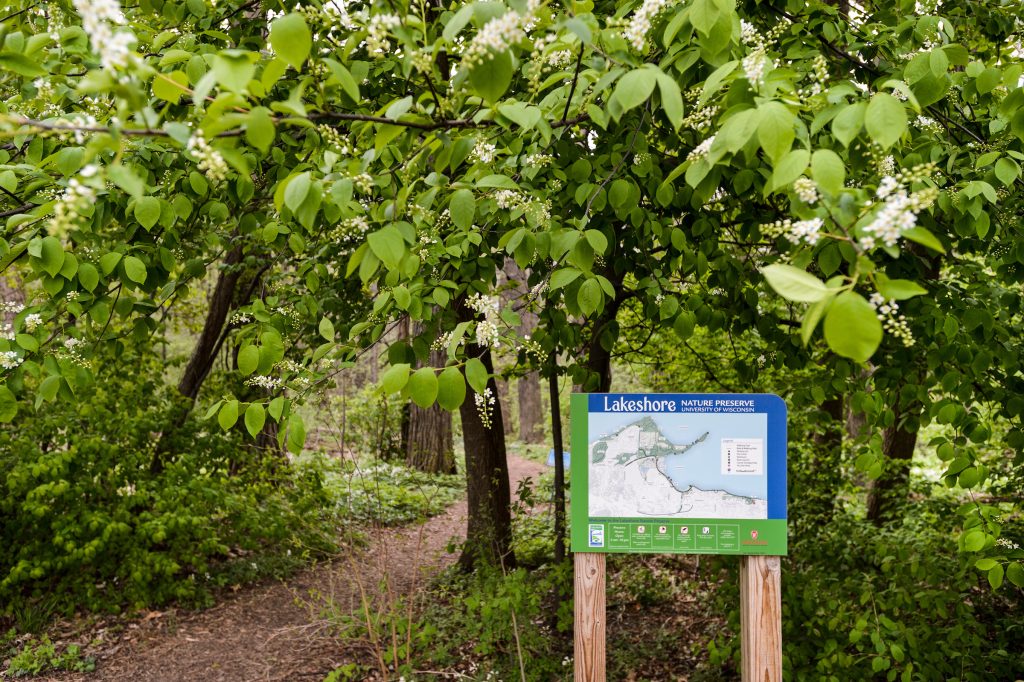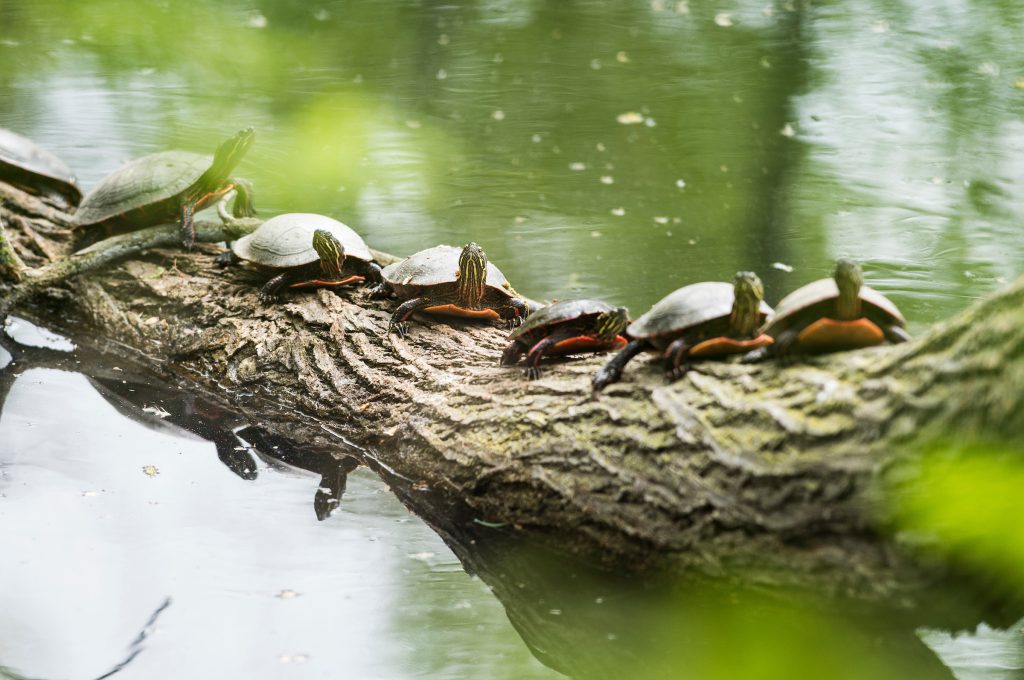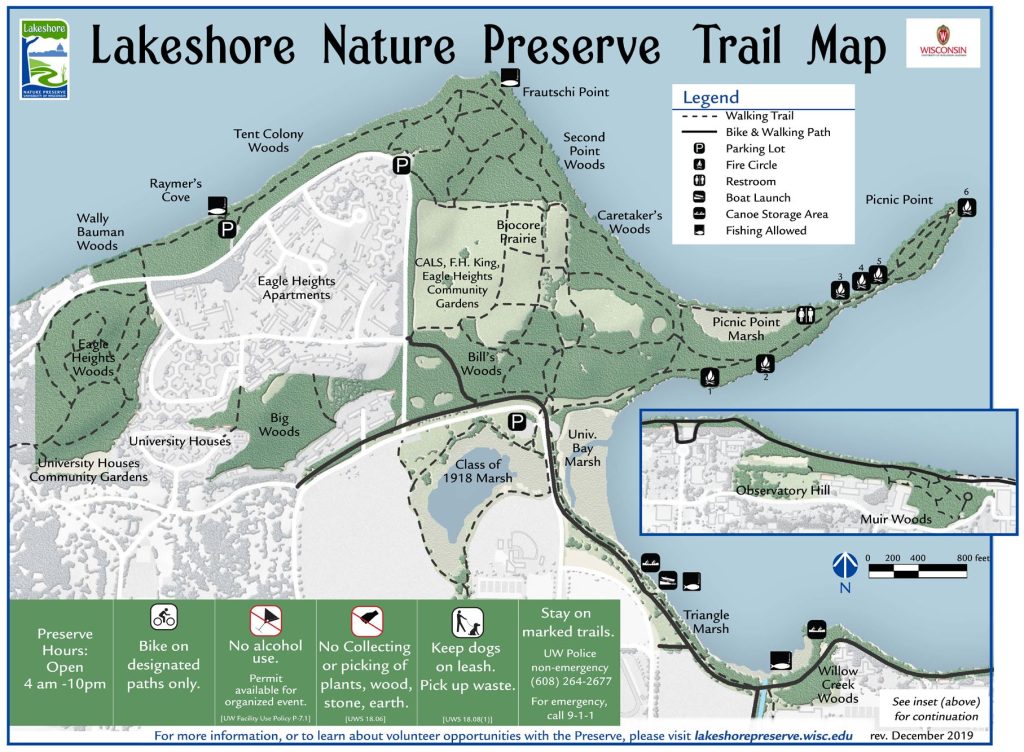UW–Madison Lakeshore Nature Preserve offers valuable campus resource

The Lakeshore Nature Preserve contributes significantly to the beauty, sustainability and identity of the University of Wisconsin-Madison. It is also a valuable campus resource for respite, teaching, research and outreach.

The Preserve is 300 acres or roughly 1/3 of the UW–Madison campus. It is situated on the south shore of Lake Mendota, comprising 4.3 miles of shoreline—the longest continuous stretch of wild shoreline anywhere on Lake Mendota. There are sites in the Preserve where the archaeological record can still be explored and studied to learn about the people who lived here in the past. These sites are powerful symbols of living traditions for the many Native Americans who live in and around Madison.
Here are some other facts about the Preserve:
- It is the largest classroom and laboratory on campus. Each year, the Preserve has about 75 permitted teaching and research projects.
- The Preserve’s woodlands, savanna, prairie, and wetlands are in various stages of ecological restoration to protect and increase native biodiversity.
- A variety of animals use the Preserve, including sandhill cranes, bald eagles, osprey, fox, coyotes, deer, mink, turtles, frogs and pollinators. More than 255 bird species have been observed.
- The Preserve serves as place of retreat with more than 10 miles of trails, a bike route and six reservable fire circles on Picnic Point.
- The Preserve protects some of the most celebrated features of campus, including views of Lake Mendota and Picnic Point from Observatory Hill, and of the university and city skylines from Picnic Point.
- Outstanding scientists drew inspiration from the place we now call the Preserve: writer John Muir lived next to it; ecologist John Curtis studied it; soil scientist Francis D. Hole introduced students to the world beneath their feet in it; and conservationist Aldo Leopold taught classes in it.
Find out more about the Preserve and plan your next visit on their website.


